A history of Grand Seiko in ten chapters. Vol.8 The 10 beat movement. A superb balance of precision and durability made possible by a history of in-house technology and superior craftsmanship
HI-BEAT The quest for high precision
A wristwatch's precision is the ultimate test of its quality, which is why, from the very start, the Grand Seiko team had always put precision at the top of the list of priorities. The company had long been honing the precision of its watches in Japanese chronometer trials but, wanting to test itself against the world’s best, accepted the gracious invitation of the Neuchâtel and Geneva Observatory chronometer accuracy competitions and participated from the early 1960’s, vying with the world's top watchmakers to make the most accurate watches. It was through this process that the Grand Seiko team became convinced that high-beat movements were the best way to achieve the greatest precision.
In every mechanical watch, the force exerted by the mainspring as it unwinds turns the gears while the constant rate of oscillation of the balance wheel applies a brake on the gears, resulting in the precise rotation of the hands. The precision of a watch therefore depends on the stability of the balance wheel. Just as a fast-spinning top is more stable than a slow-spinning one, the higher the oscillation frequency of the balance, the less susceptible is the movement to the impact of shock and other forces and the greater the precision.
Through its experience in the Observatory competitions, the team identified 36,000 oscillations per hour (10 per second) as the rate needed to achieve both high accuracy and durability and, in 1968, two different high-beat movements were created. The Suwa Seikosha team made the automatic-winding Calibre 61 series and Daini Seikosha the manual-winding Calibre 45 series. With these two new calibres, the company took its place among the select few manufacturers who successfully rose to the high-beat challenge.
By the 1990’s, advances in manufacturing and materials had opened new possibilities in Grand Seiko’s mechanical watchmaking and these advances were used to the full in the creation of the completely new 9S mechanical movement in 1998. Following its development, the engineers began pursuing even higher accuracy and durability and, in 2004, a new project was launched to develop a 10 beat movement that would take Grand Seiko’s precision to a new level.
HI-BEAT The quest for high precision
A wristwatch's precision is the ultimate test of its quality, which is why, from the very start, the Grand Seiko team had always put precision at the top of the list of priorities. The company had long been honing the precision of its watches in Japanese chronometer trials but, wanting to test itself against the world’s best, accepted the gracious invitation of the Neuchâtel and Geneva Observatory chronometer accuracy competitions and participated from the early 1960’s, vying with the world's top watchmakers to make the most accurate watches. It was through this process that the Grand Seiko team became convinced that high-beat movements were the best way to achieve the greatest precision.
In every mechanical watch, the force exerted by the mainspring as it unwinds turns the gears while the constant rate of oscillation of the balance wheel applies a brake on the gears, resulting in the precise rotation of the hands. The precision of a watch therefore depends on the stability of the balance wheel. Just as a fast-spinning top is more stable than a slow-spinning one, the higher the oscillation frequency of the balance, the less susceptible is the movement to the impact of shock and other forces and the greater the precision.
Through its experience in the Observatory competitions, the team identified 36,000 oscillations per hour (10 per second) as the rate needed to achieve both high accuracy and durability and, in 1968, two different high-beat movements were created. The Suwa Seikosha team made the automatic-winding Calibre 61 series and Daini Seikosha the manual-winding Calibre 45 series. With these two new calibres, the company took its place among the select few manufacturers who successfully rose to the high-beat challenge.
By the 1990’s, advances in manufacturing and materials had opened new possibilities in Grand Seiko’s mechanical watchmaking and these advances were used to the full in the creation of the completely new 9S mechanical movement in 1998. Following its development, the engineers began pursuing even higher accuracy and durability and, in 2004, a new project was launched to develop a 10 beat movement that would take Grand Seiko’s precision to a new level.
Read More
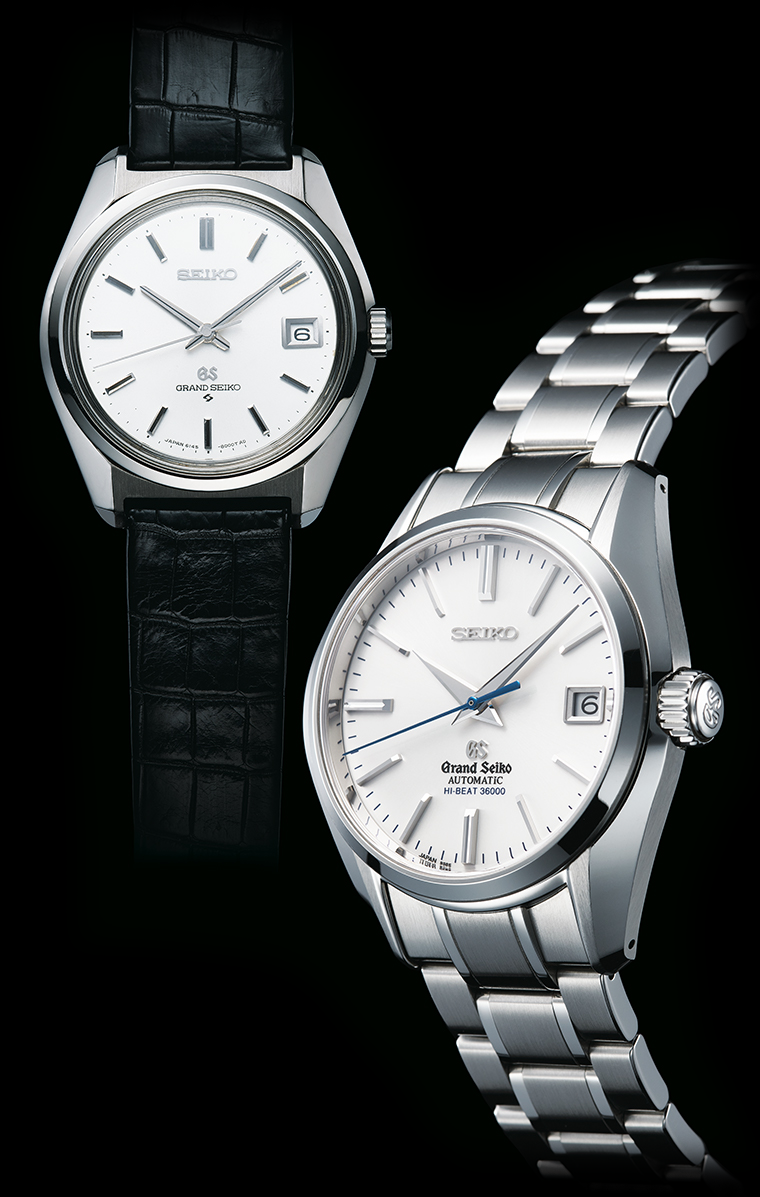
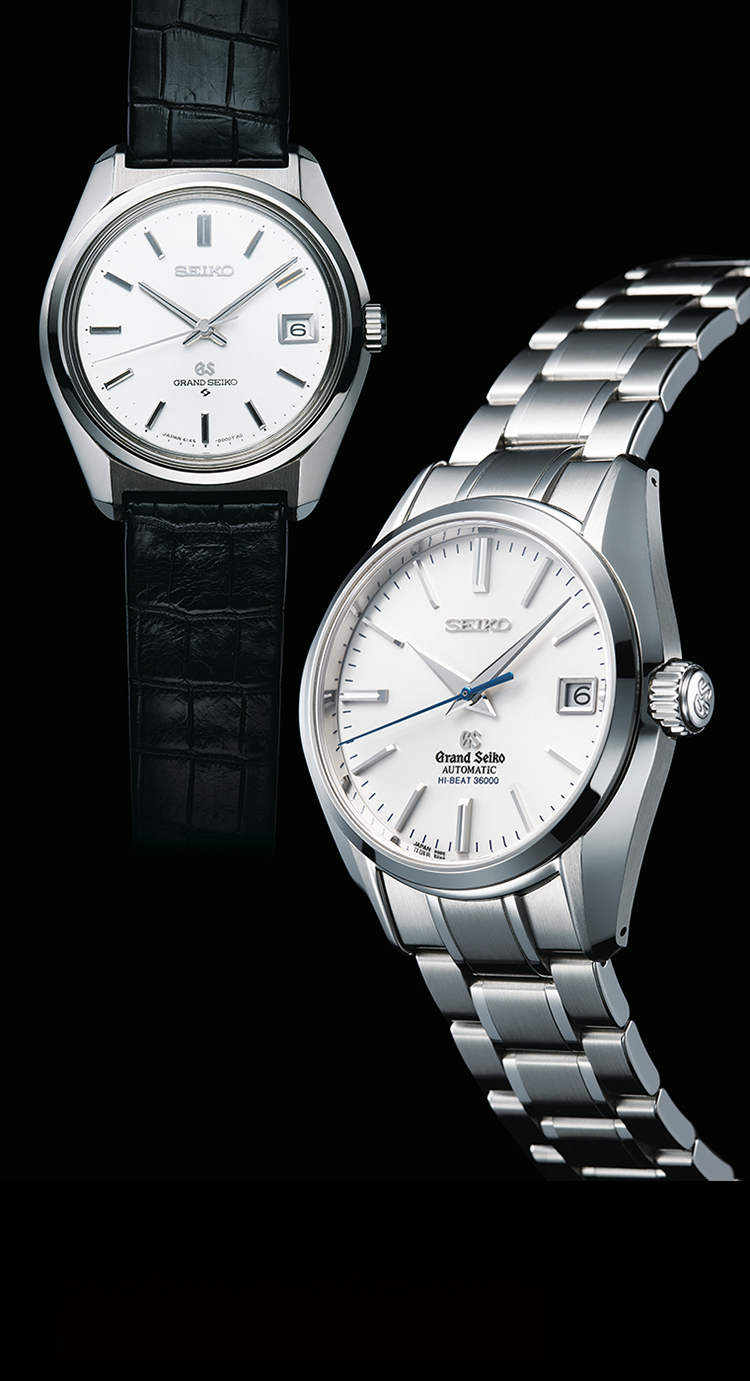
Left: A 1968 Grand Seiko carrying the 10 beat movement, Calibre 6145
Right: Grand Seiko Mechanical Hi-Beat 36000 released in 2009 was the first to carry the 10 beat movement, Calibre 9S85. It offered a precision of +5 to -3 seconds a day and a power reserve of 55 hours.
10 beat wristwatches of the 1960s
Calibre 6145, 1968
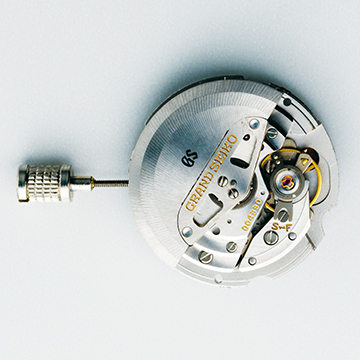
Calibre 6145, the automatic-winding 10 beat movement created by Suwa Seikosha. While featuring a high 10 beat movement, it also had a hacking function, which was considered technologically difficult at that time. An acclaimed timepiece that combined high accuracy, practicality, and reliability.
Calibre 4520, 1968
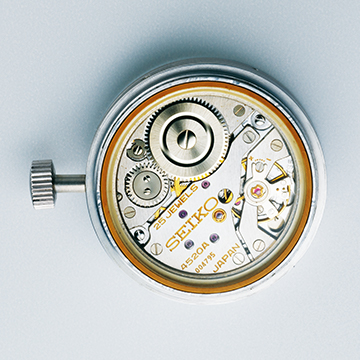
Calibre 4520, the manual-winding 10 beat movement manufactured by Daini Seikosha, had a profile of just 3.5 mm. Slimmer than the 44 and 57 series movements, it featured an elegant design as well as high precision. With the creation of this calibre and the 61 series, Grand Seiko offered a range of 10 beat calibres that was among the most extensive in the world.
Calibre 4580 (V.F.A), 1969
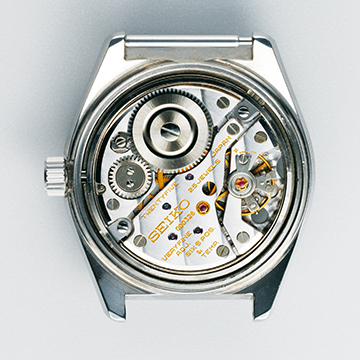
The manual-winding Calibre 4580 manufactured by Daini Seikosha. Applying the technology honed through participation in the Observatory chronometer competitions, this V.F.A. movement achieved the astounding level of accuracy of ±1 minute a month.
